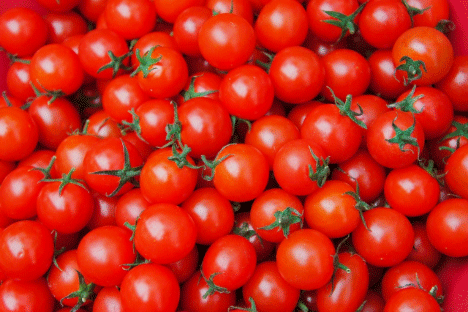Spain’s tomato export industry, traditionally one of the pillars of the country’s agricultural economy, is undergoing a significant transformation. The latest data from the 2023-24 season reveals that while Almería remains the top exporter, responsible for 62.61% of all tomatoes shipped out of Spain, the industry has suffered a considerable setback. Over the past ten seasons, total tomato exports have decreased by 154 million kilograms, marking a 28.01% reduction since 2014.
Almería: Dominating Yet Declining
Almería’s dominance in the tomato export market is unquestionable, with 396.06 million kilograms of tomatoes exported in the 2023-24 season. This figure represents more than six out of every ten tomatoes exported by Spain, with Almería selling €632.89 million worth of tomatoes at an average price of €1.60 per kilogram. Despite this, the province has seen a consistent decline in export volume over the last decade, reflecting broader challenges within Spain’s tomato industry.
The Broader National Picture
Spain as a whole exported 632.61 million kilograms of tomatoes in the 2023-24 season, generating €1.094 billion in revenue at an average price of €1.73 per kilogram. While these figures may seem strong, the drop in export volume is a concerning trend for the industry.
Granada, the second-largest tomato-exporting province, accounted for 9.43% of Spain’s total exports, shipping 59.67 million kilograms of tomatoes valued at €147.33 million. However, Granada has also experienced a sharp decline in its tomato exports—down 30.81% since the 2014-15 season. Similarly, Murcia, which exported 57.54 million kilograms (9.1% of the national total), has struggled with decreasing export volumes and sold its tomatoes at €1.72 per kilogram in the 2023-24 season.
Shifts in Smaller Provinces: Alicante and Las Palmas
Two other provinces with significant tomato export histories, Alicante and Las Palmas, are noteworthy for their drastic reductions in production and export over the past decade. Alicante exported 27.99 million kilograms in 2023-24, representing 4.42% of Spain’s total tomato exports. This figure marks an 18.46% decrease from ten seasons ago. Las Palmas, once a key player, exported a mere 0.98 million kilograms in the same period—98.16% less than the 53.06 million kilograms it exported in the 2014-15 season. The average price per kilogram of tomatoes exported from Las Palmas was €1.14.
What’s Behind the Decline?
The declining trend in tomato exports from Spain is the result of several converging factors. Competitive pressures from countries like Morocco and the Netherlands, where production costs are lower or greenhouse technologies are more advanced, have eroded Spain’s market share. Additionally, rising production costs, particularly labor and energy prices, have made Spanish tomatoes less competitive globally.
Furthermore, changes in consumer preferences, including a growing demand for alternative vegetables and year-round availability from non-European producers, have impacted Spain’s tomato exports. Finally, climate variability, particularly extreme weather events, has affected crop yields in regions like Almería and Murcia, exacerbating the industry’s challenges.
While Almería and other Spanish provinces continue to play a major role in global tomato exports, the steady decline in export volumes over the past decade presents a serious challenge for the industry. To reverse this trend, the sector must invest in innovations such as advanced greenhouse technologies, improve water-use efficiency, and explore strategies to compete with emerging international players. Without these adaptations, Spain risks further losing its foothold in the global tomato market.































